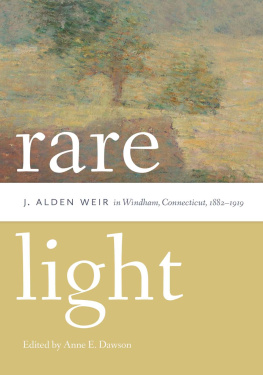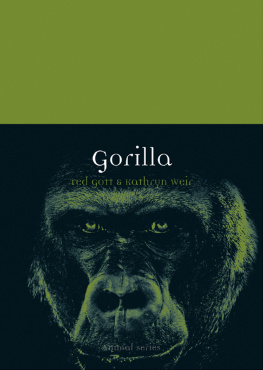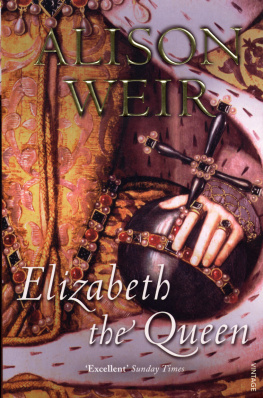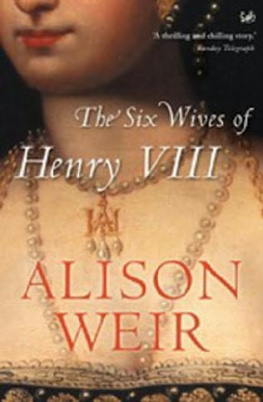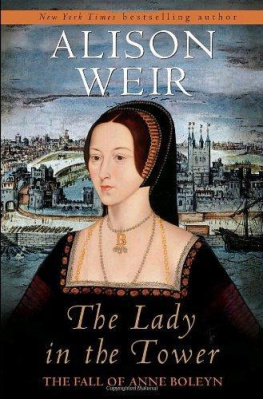

A DRIFTLESS CONNECTICUT SERIES BOOK
This book is a 2016 selection in the Driftless Connecticut Series, for an outstanding book in any field on a Connecticut topic or written by a Connecticut author.
rare
J. ALDEN WEIR in Windham, Connecticut, 18821919
light
Edited by Anne E. Dawson
With essays by Charles Burlingham, Jr.,
Rachel Carley, and Jamie H. Eves
Wesleyan University Press | Middletown, Connecticut
Wesleyan University Press
Middletown CT 06459
www.wesleyan.edu/wespress
2016 Wesleyan University Press
All rights reserved
Manufactured in the United States of America
Designed by Mindy Basinger Hill
Typeset in Fanwood
The Driftless Connecticut Series is funded by the Beatrice Fox Auerbach Foundation Fund at the Hartford Foundation for Public Giving.
Library of Congress
Cataloging-in-Publication Data
Rare light: J. Alden Weir in Windham, Connecticut, 18821919 / edited by Anne E. Dawson; with essays by Charles Burlingham, Jr., Rachel Carley, and Jamie H. Eves.
pages cm
Includes bibliographical references and index. ISBN 978-0-8195-7617-0 (pbk.: alk. paper)ISBN 978-0-8195-7618-7 (ebook)
1. Weir, Julian Alden, 18521919Criticism and interpretation.
2. Weir, Julian Alden, 18521919Homes and hauntsConnecticutWindham.
3. Windham (Conn.)History.
4. Windham (Conn.)In art. I. Dawson, Anne E. (Anne Elizabeth), 1956 editor.
ND237.W4R37 2016
759.13dc23
2015026787
5 4 3 2 1
Cover illustration: J. Alden Weir, The Shadow of My Studio, Windham, c. 18901910.
Oil on canvas, 30 1/4 x 25 1/4. Private Collection.
THIS BOOK WAS MADE POSSIBLE BY THE GENEROUS SUPPORT OF
The Beatrice Fox Auerbach Foundation Fund at the Hartford Foundation for Public Giving
Charles Burlingham, Jr.
The Connecticut State University Chapter of the American Association of University Professors
The Lyman Allyn Art Museum
Weir Farm National Historic Site
[B]ut still I hope by this hour the clouds have all dispersed & the bright new quarter of the moon that is now shining is visible also at dear old Windham. Oh, how I would like to be there to walk with you through the large old trees that stand like sentinels in the ancient homestead of the Taintors. Still, I will hope before long to enjoy those lovely walks & watch the long & pale shadows, varied by the different forms of the cedars & the pines, while the rare light of tiny little stars will cause the moonlight to be less wonderful.
J. ALDEN WEIR TO ANNA DWIGHT BAKER, MAY 23, 1882
CONTENTS
PREFACE
Anne E. Dawson
This book is the result of fortuitous coincidence that introduced me to the fascinating and largely untold story of J. Alden Weirs personal and creative life in Windham, Connecticut. In the fall of 2009, my friend and colleague Elizabeth Peterson, then director of Eastern Connecticut State Universitys Akus Gallery, brought to my attention the fact that the famous American Impressionist painter had lived and worked in Windham and was buried in the Windham Center Cemetery, located only a few miles from the university. As I began to investigate the topic, I soon realized that Weirs relationship with Windham was a fascinating and multilayered story that few people in the town or Connecticut at large knew about. And, while a number of American Impressionist scholars understood the importance of Windham for Weirs career, the full story had yet to be told. My preliminary Weir research led me to discover other important histories about this region that merited study. Willimantic, home of the university where I teach, and now a component of Windham, was once one of the most important industrial centers in the world. Windham Center which I had traveled through, and admired, for many years on my commute to campus was home to residents who played a vital role in the history of early America. The whole of Windham Center, filled with wonderful historic houses and a charming village green, is now on the National Register of Historic Places. Yet the social and architectural history of this important place had not been appropriately researched and published. I became increasingly intrigued by the stories of Weir, Willimantic, and Windham and the connections among them. I wanted to uncover and celebrate these histories and, in so doing, draw attention to a historically significant but underappreciated region of Connecticut.
The four chapters that comprise this book recount J. Alden Weirs multi-faceted life in eastern Connecticut, and simultaneously open a window onto the social, environmental, historical, and architectural contexts in which those activities took place.
In , Charles Burlingham, Jr., Weirs only surviving grandchild, provides a personal perspective on growing up surrounded by the legacy of one of Americas most distinguished artistic families. Burlingham, born after Weirs death, came to know his grandfather through the reminiscences imparted by his mother and her siblings and the numerous paintings that covered the walls of his home. An enthusiastic researcher and guardian of his familys history, Burlingham participated in the efforts that succeeded in preserving Weirs western Connecticut farm in Branchville (Wilton) as the first and only national historic park in Connecticut. His chapter includes information from his own research as well as family anecdotes that show us the personal side of Weir his role as a parent, for example and remind us that all artistic production is grounded in the human and the ordinary.
In , I tell the story of Weirs life in Windham, outlining in detail his artistic and personal activities. I rely on the extensive letters in various Weir archives to chronicle the artists sense of Windham as a place for social gatherings, physical and psychic rest, and art-making. Among other insights, these letters bring to light Weirs deep love for his two wives (after his first wifes death, he married her sister) and their children, and detail his devotion to nature. Parallels are drawn between Weirs pursuits at his Connecticut farm in Branchville and his life in Windham. My chapter documents the building and use of Weirs Windham studio, which no longer stands, discusses Weirs connections with fellow artists Emil Carlsen, Childe Hassam, Albert Pinkham Ryder, and John Singer Sargent friends who visited him in Windham and analyzes the style and content of individual paintings that Weir, Carlsen, and Hassam completed during stays in Windham.
provide in-depth contextual information about the architecture, culture, history, and geography of the region. These help create an accurate sense of time and place, allowing for a deeper understanding of Weirs life and work in eastern Connecticut.
, historian Jamie Eves traces the profound changes in the environment of northeast Connecticut and the concurrent preoccupation in the state with pastoral preservation. Eves describes in detail the landscapes of Windham and Willimantic as they appeared in Weirs lifetime. In the late nineteenth and early twentieth centuries, eastern Connecticut was largely deforested due to farming and so was characterized by open vistas. Eves compares those views to Windhams landscape today, tracing Willimantics shift from an organic city to a modern urban environment and Windham Centers transformation during Weirs lifetime from a farm and market village to a social center.
, written by architectural historian Rachel Carley, presents a biography of Weirs homestead in Windham Center, the Baker-Weir House. After Weirs first visit to his fiance Anna Bakers Windham home, he described it in a letter as the ancient homestead of the Taintors. This comment suggests that Anna spoke of the homes earliest history and shared her sense of pride in both her family ancestry and the ancestry of the house, which was carefully preserved and handed down through generations. Weir, his first wife Anna, and his second wife Ella all treasured family life and family history. They held on to family treasures portraits, furniture, clothing, embroidery, legal documents some dating back to the 1700s. Anna and Ella Bakers ancestors, the Taintors and Bakers, were influential inhabitants of Windham Center and prominent American citizens. Carley traces the evolution of the houses ownership and its architectural transformation from a colonial structure to a fashionable Victorian manor and hobby farm. She demonstrates how the Baker-Weir House both symbolized and realized the preservation of family legacy and stability for many generations. Taken together, the chapters that comprise this book celebrate the interconnectedness of art, architecture, family, history, and environment. This book is meant to be a beginning. I hope that it will inspire subsequent writers to dig even further into this rich history.
Next page
